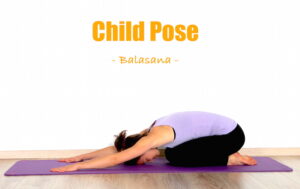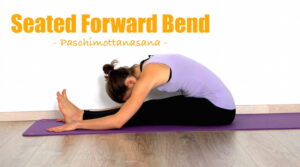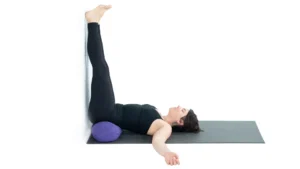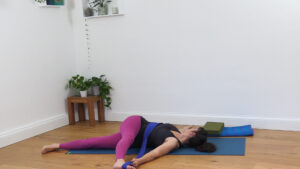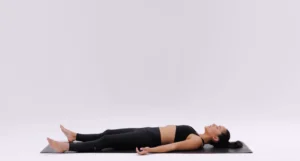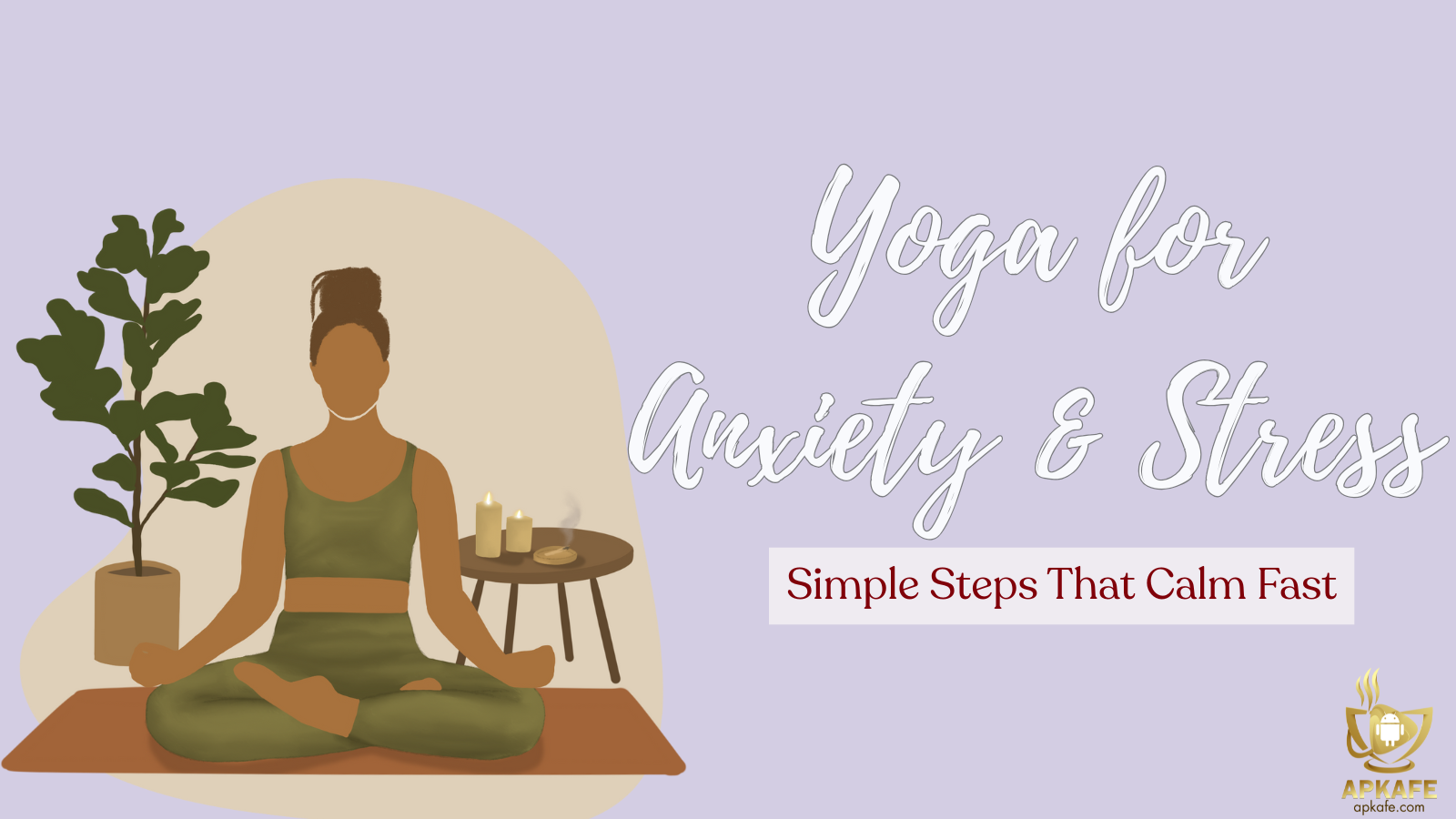Yoga for Better Sleep in 10 Minutes
Can ten minutes of gentle yoga really change how you sleep? When you slow your breath and stretch mindfully, your body listens. Each exhale activates your parasympathetic nervous system - the part that lowers heart rate, relaxes muscles, and signals your brain: It’s time to rest. Practicing yoga for sleeping better trains your body to relax before bed. Unlike sleep pills that force rest, yoga helps you retrain the natural rhythm of your body. By combining movement, breath, and focus, you gradually quiet mental noise and prepare every system for recovery. This isn’t about flexibility or complicated postures, it’s a nightly ritual to guide your body back to calm. By the end of this guide, you’ll learn the science behind yoga’s sleep power and a realistic 10-minute bedtime routine you can do anywhere. Stay until the end — the final pose alone can rewire how your body feels about bedtime.
Why Yoga Improves Sleep Quality
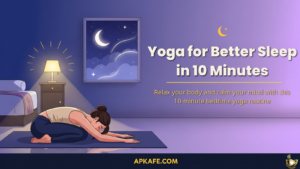
People often try yoga for sleeping better without realizing how strongly it affects body chemistry. Before unrolling your mat, understand why these slow stretches can reprogram your sleep.
Many people know yoga helps you relax — but few understand why it actually improves sleep cycles.
Physical relaxation – lowering tension and body temperature
Gentle stretches like Child’s Pose and Legs Up the Wall release daytime muscle tightness and slightly cool the body, which helps melatonin rise. Harvard Health (2024) found that a light evening routine can shorten the time to fall asleep by nearly 45 %.
Nervous system balance – turning on “rest and digest”
Slow breathing increases vagal tone, calming cortisol levels and slowing the heart. This shift toward parasympathetic dominance mimics the brain waves of early deep sleep.
Mental focus – quieting the racing mind
Linking breath and motion keeps attention anchored in the present, interrupting anxious thought loops — the same principle used in mindfulness-based insomnia therapy.
Emotional safety – transforming restlessness into release
Repetitive, slow poses create a sense of safety; the brain learns that evening movement equals emotional comfort. Sleep Foundation (2024) notes fewer awakenings and higher deep-sleep percentages among regular practitioners.
Circadian retraining – building a consistent cue
Practicing yoga at the same hour nightly teaches your body when to power down. This behavioral rhythm, called habitual entrainment, gradually restores natural sleep timing.
Knowing this, every inhale becomes an invitation, and every exhale a quiet permission to sleep.
Before You Start — Setting Up for Sleep Yoga
Set up your space right, and every stretch works twice as deeply.
Environment checklist
- Soft amber light; room 65–68 °F.
- Silence notifications or use Do Not Disturb.
- Lay a mat or folded blanket beside your bed.
Warm-up: Sit cross-legged, breathe deeply for five cycles — exhale longer than inhale.
Props: Use a pillow or towel under knees or hips for comfort.
Safety reminders
- Avoid inversions before bed.
- Consult a doctor if pregnant, injured, or facing chronic insomnia.
- If using a wellness app, check what data it collects.
The 10-Minute Bedtime Yoga Routine
This 10-minute sequence of yoga for sleeping better is designed for anyone who struggles to unwind at night. Stay with me till the last pose — it’s the one most yoga teachers swear by for Stay with me till the last pose — it’s the one most yoga teachers swear by for instant calm.
Child’s Pose (Balasana) — Ground the Mind
Kneel, bring big toes together, and rest your torso between thighs. Forehead to mat, arms forward.
- Why it helps: lowers heart rate, quiets mental chatter.
- Pro Tip: breathe into your back ribs; visualize tension melting downward.
- Safety: pillow under hips if knees ache.
Seated Forward Fold (Paschimottanasana) — Let Go of the Day
Sit tall with legs extended. Inhale to lengthen spine, exhale to fold from hips.
- Pro Tip: keep knees bent slightly; long exhalations trigger relaxation.
- Pitfall: rounding back aggressively.
- Safety: avoid lower-back pain or sciatica.
Legs Up the Wall (Viparita Karani) — Circulation Reset
Lie near a wall, swing legs up, rest heels.
- Why it helps: drains fatigue from legs, lowers blood pressure.
- Pro Tip: support hips with folded towel; stay 3–5 min.
- Safety: avoid glaucoma or neck injury.
Reclined Butterfly (Supta Baddha Konasana) — Open and Release
Lie back, soles of feet together, knees wide, thighs supported.
- Mind cue: one hand on heart, one on belly — repeat, “I’m safe.”
- Safety: move feet farther from hips if discomfort.
Cat–Cow Flow (Marjaryasana–Bitilasana) — Soothe the Spine
On hands and knees, inhale to arch (Cow), exhale to round (Cat).
- Pro Tip: match movement to breath; feel vertebrae unwind.
- Safety: wrists under shoulders; pad wrists if sore.
Supine Twist (Jathara Parivartanasana) — Detox Tension
Lying down, hug right knee to chest, cross over left side; arms open.
- Pro Tip: keep both shoulders grounded for a balanced twist.
- Safety: skip deep twists during pregnancy.
Supported Bridge (Setu Bandhasana) — Reset the Nervous System
Feet hip-width, lift hips, slide block or cushion under sacrum.
- Why it helps: activates parasympathetic rest-and-digest response.
- Pro Tip: keep your gaze up, breath soft.
- Safety: avoid neck issues.
Corpse Pose (Savasana) — Surrender and Sleep
Lie flat, palms up, legs relaxed.
- Mind practice: count exhalations backward from 20 to 1. If thoughts wander, return gently to breath.
- Safety: pillow under knees for back comfort.
Common Pitfalls & Fixes
| Mistake | Why It Hurts Sleep | Quick Fix |
|---|---|---|
| Rushing poses | Keeps cortisol high | Inhale 4 s / Exhale 6 s |
| Bright light | Signals wakefulness | Use amber lamp |
| Holding breath | Raises tension | Focus on soft exhale |
| Competing flexibility | Creates stress | Feel, don’t force |
| Loud playlists | Stimulates mind | Use nature sounds |
5-Minute Sleep-Yoga Readiness Checklist
| # | Item | Why It Matters | Tip |
|---|---|---|---|
| 1 | Lighting & Space | Sets bedtime cue | Warm lamp |
| 2 | Device Detox | Prevents melatonin loss | Night mode |
| 3 | Comfort Props | Avoids strain | Household pillows |
| 4 | Breathing Pattern | Calms nerves | 4-7-8 method |
| 5 | Privacy & Safety | Protects data | Review app permissions |
| 6 | Consistency | Builds habit | Nightly reminder |
Results & Reflection — What Changes After 1 Week
After a few nights you may notice:
- Falling asleep faster, fewer awakenings.
- Looser muscles at bedtime.
- Deeper, slower breathing.
- Lower resting heart rate.
Track your progress in a mental wellbness app; reflection strengthens habit loops. Yoga doesn’t make you sleep — it teaches your body to remember rest.
Health & Privacy Disclaimer
Informational only — not medical advice.
- Consult professionals before new exercise.
- Avoid pain or dizziness.
- Skip vigorous styles before bed.
- Review app permissions and data sharing.
FAQs
How long before bed should I practice? 15–30 minutes after screens off.
Can yoga replace medication? No, but it can reduce reliance — consult your doctor.
What if I fall asleep mid-pose? Fine — roll to your side safely.
Does morning yoga also help? Yes, it stabilizes the circadian rhythm.
Which apps track progress safely? See Fitness Tracker Apps.
How do I stay consistent? Pair with Mental Wellness Apps.
Closing — Let Your Breath Be the Lullaby
Better sleep isn’t something you chase — it’s something you allow.
Each pose, each breath, is a gentle dialogue between body and mind whispering: You’ve done enough. You can let go now.
Starting tonight. Dim the lights, roll out your mat, and let your breath be the lullaby that carries you to rest. Commit to a week of yoga for sleeping better — you’ll retrain your body to rest, not force it.
User Reviews

